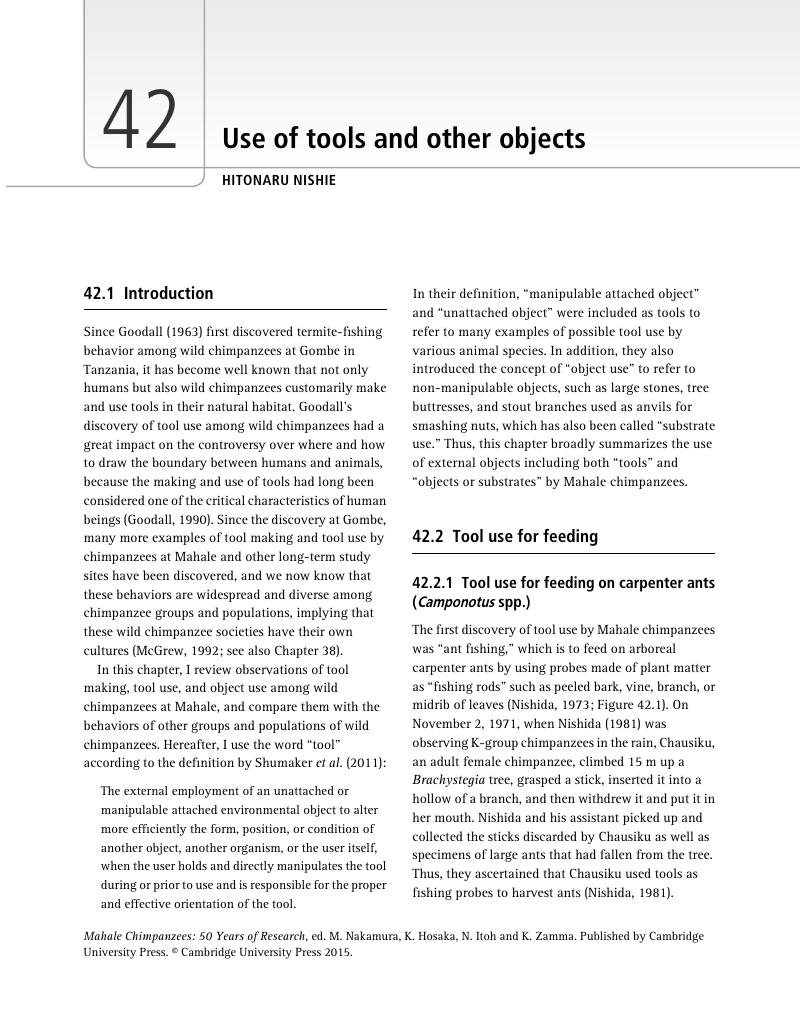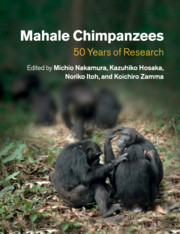Book contents
- Mahale Chimpanzees50 Years of Research
- Mahale Chimpanzees
- Copyright page
- Contents
- Contributors
- Foreword
- Preface
- Acknowledgments
- 1 Introduction
- Part I History and overview
- Part II Social organization
- Part III Ecology
- Part IV Feeding
- Part V Life history and health
- Part VI Social relations
- Part VII Social behavior
- Part VIII Behavioral diversity
- 38 Culture
- 39 Vocal communication
- 40 Diversity of play
- 41 Laterality of hand function
- 42 Use of tools and other objects
- 43 Bed making and nocturnal behavior
- Part IX From field to lab
- Part X People and chimpanzees
- Appendices
- Index of chimpanzees’ names
- Subject index
- References
42 - Use of tools and other objects
from Part VIII - Behavioral diversity
Published online by Cambridge University Press: 05 September 2015
- Mahale Chimpanzees50 Years of Research
- Mahale Chimpanzees
- Copyright page
- Contents
- Contributors
- Foreword
- Preface
- Acknowledgments
- 1 Introduction
- Part I History and overview
- Part II Social organization
- Part III Ecology
- Part IV Feeding
- Part V Life history and health
- Part VI Social relations
- Part VII Social behavior
- Part VIII Behavioral diversity
- 38 Culture
- 39 Vocal communication
- 40 Diversity of play
- 41 Laterality of hand function
- 42 Use of tools and other objects
- 43 Bed making and nocturnal behavior
- Part IX From field to lab
- Part X People and chimpanzees
- Appendices
- Index of chimpanzees’ names
- Subject index
- References
Summary

- Type
- Chapter
- Information
- Mahale Chimpanzees50 Years of Research, pp. 568 - 582Publisher: Cambridge University PressPrint publication year: 2015



